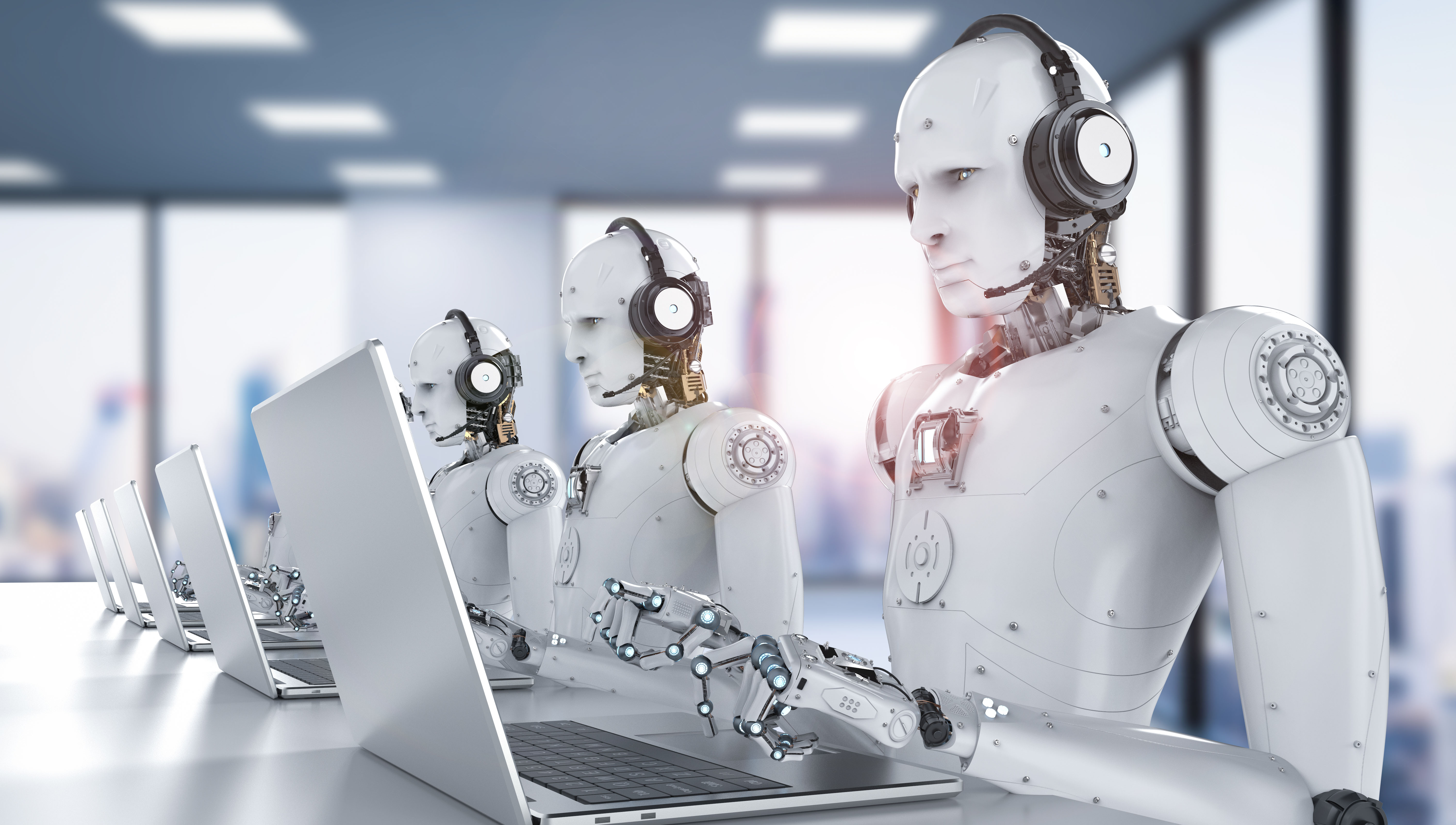
Nautilus head of strategy Debbie Cavaldoro was keynote speaker at the Maritime Exchange 2019 conference in Liverpool, where she spoke about the maritime workforce of the future and how to bridge the people and skills gaps. Here is an edited version of her speech
My role at Nautilus International is one of long-term strategic focus: on what the maritime industry will look like in 20- and 30-years’ time and how the maritime professionals of today will meet the needs of that future.
How many of you believe your job will still exist in 2050? Whether or not, of course, it’s still you in that role?
A recent study by Oxford university found that nearly 50% of all employment is at high risk of automation over the next two decades; while a study by the International Federation of Robotics found that computers could already undertake at least 30% of the tasks in 60% of occupations.
Experts predict that in the next decade the low-skill and low-wage occupations, which are traditionally thought of as being at risk, will no longer be at risk. Those that can be automated, will have been. The ‘work that remains’ category will consist of tasks which require creativity and social intelligence – the hardest areas to computerise.
This means that the next wave of automation will hit higher-paid, higher- skilled roles. Potentially half of us undertake jobs which will not require human interaction in the next 20 or 30 years.

And there's more good news coming our way. Most models predict that workers in transportation and logistics occupations, and those in office and administrative roles, are at medium to high risk.
How many of you work in an office-based managerial role in the transport or logistics sector? Maybe you might want to think again. We all readily accept that automation and computerisation will become the norm in the workplace, but we rarely believe it's our own jobs which are at risk.
And yet many of us talk about automation on ships without considering these factors. Without considering the people who currently undertake those roles or their skills and expertise gained over many years. Or – just as important – their personal, emotional attachment to their job.
In 2017 an EU-funded survey on unmanned navigation found that 97% of predominantly shore-based maritime workers believed the first commercial autonomous ships would be introduced within the next 10 years.
However, a Nautilus Federation survey last year found that fewer than 40% of serving seafarers consider that commercially viable unmanned vessels would be in service within the next 20 years.
So, if we are to consider a future where many current jobs no longer exist, how do we ensure that we put the human factors at the heart of the debate? We must remember how we would react.
I doubt any of us believe our job is simple. Would we be happy for an IT technician to come into our office one day and tell us the robots have arrived and we are surplus to requirements? How will that robot even know what our job is? Who programmed it and what do they know about our role and how many years of hard work it took to get there?
It stands to reason that we need to ensure that the vital skills and knowledge contained in those jobs are not lost.
The survey conducted by Nautilus found that most seafarers understand automation is coming, and 85% of them believe their jobs are at risk because of it. But that doesn’t mean they are completely averse to it.
Many of them are highly sceptical of automation and especially around the motivation of some tech companies to launch into a potentially massive new market.
But what they want to be is involved in the debate.
Just over 85% of those taking part in our survey said they considered unmanned, remotely controlled vessels to be a threat to safety at sea, especially in coastal waters, harbours and pilotage areas.
If or when automation does come, it will not hit all at once, so we have to ensure that new technologically advanced ships can operate alongside today's vessels.
Many of us agree that the shift will be gradual. We will see a decline in the number of seafarers onboard, with more operations being controlled ashore. This will have two big impacts which I'd like to take some time to go into: the effect for those onboard and the effect for those ashore.
For those working onboard, technology could be used to improve safety and deliver improved operational performance. New equipment and systems could reduce workloads, ease administrative burdens, eliminate dirty and dangerous tasks, assist with predictive and preventive maintenance and end the shocking number of deaths from enclosed spaces.
However, lower numbers of crew could potentially mean vastly increased issues of loneliness and isolation. There are already problems with the lack of technology making its way from the bridge to the crew for personal use.
Fewer than 40% of serving seafarers consider that commercially viable unmanned vessels would be in service within the next 20 years
A survey of Nautilus International members last year found that whilst nearly 90% of crew had access to the internet, its use was severely restricted. With restrictions ranging from blocks on social media or personal email sites, to prohibitively high usage costs or time restrictions.
Speculation in the industry continues as to whether internet access in cabins is having a positive or negative effect on seafarer wellbeing. But our survey found that multi-national crew and dry ships were thought by seafarers to have had the biggest effect on social interaction onboard, and the ability to stay in touch with family and friends in their cabins was easing the isolation rather than causing it.
We also must accept that the way young people interact with each other has changed. A recent study by the NHS found that nearly a third of people under 25 are teetotal. Young people are far more likely to interact online than in pubs.
Ship to shore survey - give your views
Nautilus International and HR Consulting from Spinnaker Global have joined forces to understand what Nautilus members believe the demand is for skilled seafarers when transitioning ashore.
Please take a few minutes to take this new survey, before the end of July 2019. It will update the findings from our 2015 report, which revealed that maritime professionals believe the shore-based industry was failing to spot talent or develop leadership.
If technology is properly embraced for the good of the crew, as well as the efficiency of the ships, then there is the ability to create better workplaces. If seafarers at sea can interact seamlessly with colleagues ashore, then seafaring will remain an attractive proposition. The alternative is that we try and convince young people to go away to sea and spend six months with minimal interaction and no shore leave.

The second issue, for those working at sea in the future on technologically advanced ships, is their ongoing training. Our survey on automation found that 80% of respondents thought that radical changes to training and certification were needed for the move to automated systems.
Most of the industry's forward planning is looking at the next 20 years, and long-term projects such as Maritime 2050 are still only 30 years away. That timescale is within a single career path. The cadets and junior officers already at sea will be the captains on these new advanced ships. What assessments are being made about their changing development needs? What discussions are taking place to ensure that the maritime professionals already in the workplace can adapt to the new requirements? I think you all know the answer.
Perhaps we all think that those young people already starting out in their careers will be the ones who come ashore to provide the maritime knowledge that will be needed on land?
That brings me to the second area of effect that I wanted to cover. As mentioned, most expectations for shipping in the future are that the number of crew on ships will reduce, and more ship operations will be undertaken from ashore.
But these onshore jobs will need seagoing experience in many areas. There is no difference between sending an unqualified, inexperienced person to sea to manage a ship than there is to have an unqualified, inexperienced person managing the ship from ashore. It is that skill, knowledge and ability to react to the unexpected that will be impossible to teach a computer.
So, we need to ensure that transition from ship to shore is planned and managed. Nautilus recently undertook a survey alongside recruitment agent Spinnaker Global (you might have noticed that Nautilus International really likes a survey of members!) which looked at the transition process. Nearly 80% of respondents said that the company they work for at sea with did nothing to identify, train or support them for a move to working ashore.
And more than half already believe that someone without seagoing knowledge and qualifications could not do their job. If that involves actually being in command of the vessel, then this figure will surely only rise in the future.
Many respondents also spoke a lot about the negative impact on seagoing crew when those onshore did not understand them or their role.
So, to conclude: we all accept that technology and automation in a greater or lesser extent is going to have a very big impact on ships and shipping in the next ten to thirty years. And we all need to act now to ensure that our people – both shore and sea based – understand this and are central to it.
The transition to lower or no crew on a vessel must be managed in a way that is fair on seafarers, both in terms of a just transition for those whose jobs are likely to be moved to shore and in terms of support and training; so that those who do remain onboard are not left feeling isolated or without the necessary skills to perform the new tasks.
Tags
